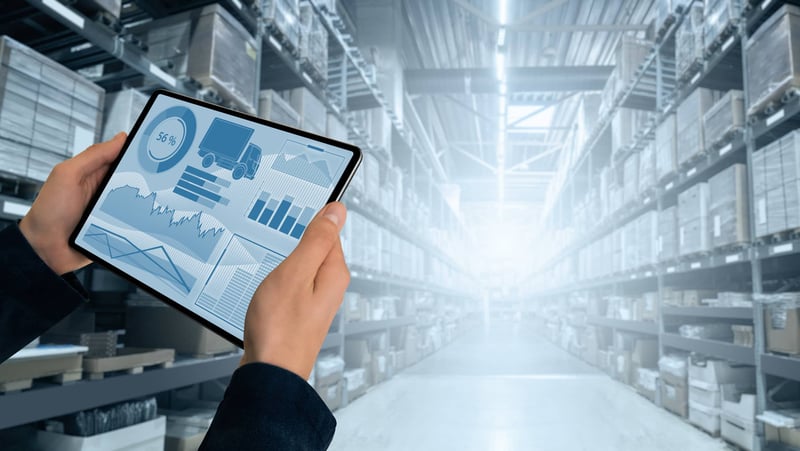
Even with the huge influence that COVID-19 has exerted, retail commerce remains fragmented. According to Chain Store Age, about half of all consumers prefer to purchase online and half in-store. Of course, the numbers vary by product and shopper demographics. Nearly 6 in 10 apparel shoppers would rather buy online, but few clothiers can afford to ignore the other 40 percent by adopting an online-only strategy.
Other statistics show the 50/50 nature of shoppers’ preferences:
- Almost all buyers of big-ticket items research the products online but in-store shoppers are 50 percent more likely to pull out their wallets.
- While e-commerce remains strong, less than half of all American consumers are buying more online now than they did before the pandemic.
- Online retailers remain slow to adopt even obviously beneficial tactics such as personalized search and omnichannel ordering.

Drawing from its customer base and unparalleled industry research, OneView Commerce, a full headless unified commerce solution for in-store, has compiled this game plan to help retailers and product managers provide a meaningful and relevant customer experience with the power of our cloud-native, microservice infrastructure.
What is Unified Commerce?
Bringing together all a company’s siloed, piecemeal customer encounters under a single platform umbrella consolidates the consumer experience and seals the gaps through which likely buyers can be lost. Unified commerce ensures every marketing message, every product image, and every engagement with a brand representative is delivered with a meticulously defined purpose. The result is a satisfying customer journey, a single, compelling brand story, unambiguous benefits, and a continuously strengthened customer/brand bond.
The result is a satisfying customer journey, a single, compelling brand story, unambiguous benefits, and a continuously strengthened customer/brand bond.
Unified Commerce Defined

Unified commerce gives retail companies a pinpoint on which to focus all their customer-facing and account-management activities. This single platform integrates, optimizes, and empowers every consumer interaction with data-inspired insights. An end-to-end solution encompassing in-store and online browsing and sales, web and social messaging and commerce, CR point-of-sale, personalization, fulfillment, inventory, supply chain, and more, unified commerce presents consumers a seamless, consistent shopping experience even as they shift across multiple marketing, communication and commerce interactions. For instance, OneView’s unified commerce platform is a cloud-native solution tailored to empower retailers as they attract, convert, and lock in their target customers. OneView’s unified commerce solution injects agility into the retail tech stack and overcomes innovation roadblocks created by the inability to integrate antiquated single-purpose applications.
A robust unified commerce platform not only empowers retailers with control to create outstanding brand experiences, but also simplifies data mobilization, putting key performance, forecasting, and metrics in the hands of strategists and decision-makers without the need for IT intermediaries.
Only through this type of unified commerce system can retailers and brands be sure their perceptions of customers are based on accurate, complete data. Only with a powerful unified commerce platform can they achieve the enterprise-wide agility they need to deliver the services and benefits today’s consumers demand. A robust unified commerce platform not only empowers retailers with control to create outstanding brand experiences, but also simplifies data mobilization, putting key performance, forecasting, and metrics in the hands of strategists and decision-makers without the need for IT intermediaries. Data-informed decisions get implemented faster, infrastructure is streamlined, IT resources can be allocated more efficiently, and new digital engagement can be delivered at the speed the business requires.
Unified Commerce vs. Omnichannel
As technology improved over the years, retailers purchased or developed numerous now-legacy components in an attempt to straddle channel engagement, bolting them on or daisy-chaining them to their existing workflow. The result is a tenuously integrated system of incongruent applications requiring too much manual intervention and delivering too little in the way of digital speed and innovation. Disjointed systems lead to disjointed consumer relationships because correct, current customer insights, basket data, and expectations remain isolated within siloed applications.
While omnichannel engagement empowers companies to interact with customers across a variety of media and marketplaces, it remains largely a set of distinct tools. Many times, targeting specific groups and consumers through each channel requires access to separate databases, ERP and CRM tools, communications protocols, and other technologies.
By connecting all engagement and data-generation to a commerce processing engine, like OneView’s unified commerce engine, retailers supercharge and consolidate channels into true customer-first experiences.
Unified commerce leverages a modern tech stack, powered by a single omnicommerce transaction engine to develop a 3-dimensional picture of each customer engagement. This drives a complete understanding of and ability to capitalize on every data touchpoint and every contact the consumer has with the brand. OneView’s unified commerce solution liberates and directs customer, behavioral, marketing, and front- and back-office workflow to create “in-the-moment” personalized offers, recommendations, POS convenience, delivery options, interactive, multisensory shopping, and more based on a brand’s comprehensive, up-to-the-second customer engagement strategy and objectives. By connecting all engagement and data-generation to a commerce processing engine, like OneView’s unified commerce engine, retailers supercharge and consolidate channels into true customer-first experiences.
What are the Modern Benefits of Unified Commerce?
Consumers today have come to expect accommodations and options, from where and how they watch movies, listen to music, and enjoy dinner to how they get where they need to go and where they work. They demand the same nimbleness when they shop for, compare, pay for, and receive the products they buy. Buyers want to encounter brands and sellers at their convenience, and they want to know what they are going to get and how they are going to be treated every time they engage a company’s product, store, or e-commerce site. They may compare products using their mobile phone during their lunch break, place their preferred item in an online shopping cart using their office desktop, pay for it and schedule an in-store pickup on their personal laptop when they get home.

Companies that drop the ball during any of these phases run the risk of losing that customer forever. They can mitigate that risk by consolidating the platform interfaces and interactions required to progress that transaction through to fulfillment. That is precisely why unified commerce is the future of retailing. Multiply that transaction over the life of a business and throw in dozens of existing variables — cloud and legacy systems, hardware investments, formatting for new device formats. Touchless and self-service POS, curbside pickup, delivery options, and the need for a unified way of managing, and it all quickly evolves from the revolutionary to the requisite. Unified commerce is soon to become standard equipment. First-movers who can establish unified commerce engagement across platforms and media will establish several avenues that delight customers and lead to sustainable competitive advantage:
Precise Targeting
Delivering every customer-to-brand interaction based on the exact tone, timing, phrasing, offers, and imagery that resonates with each consumer ensures consistent, welcome content and higher conversion percentages.
Flexible Fulfillment and POS
Making it easy for buyers to shop in-store, at the curb, or at home and simplifying the ways they can remit payment – contactless, self-checkout that accepts digital wallets and loyalty points in addition to cash, credit, and debit cards will drive more sales and increased basket sizes.
Better Data Usage
Collecting and analyzing data that reflect consumer buying patterns, online and in-store site visits, browsing preferences, demographics, purchase triggers and schedules, and more.
Effective Personalization
Granular segmentation at every touchpoint to ensure consummated engagement with the78 percent of consumers who wholly ignore marketing messages that are not personalized and tailored to their interests.
Programmatic Efficiency
Robotic process automation of routine and repetitive tasks, eliminating errors and optimizing inventory control, fulfillment, customer service, and marketing campaigns.
Optimal Media Mix
Reach into the unified basket provides access to valuable in-the-moment, consumer-centric data that inform brands about where, when, why, and how each person shops. Armed with this information, companies can invest marketing dollars more efficiently, selecting the channels, messages, recommendations, offers, and time frames that serve customers best.
All these benefits derive from unified commerce and its ability to de-silo data and free it to drive efficiencies across channels, markets, and engagements. This creates a single version of the organization’s reality, an accurate, up-to-the-second picture that illuminates and mobilizes proper strategies.

The Perfect Unified Commerce Solution
If you are like most active participants in the retail community, you are convinced that unified commerce is now a “must-have” competency. When you are ready to implement unified commerce into your business plan and go-to-market strategy, it is important to ensure your tech stack includes and integrates the key value generators the process can deliver:
Inventory Management
Knowing exactly how much of each SKU you have on hand, where it is located, when more will be arriving, and how many have been sold in a given timeframe not only will optimize the supply chain, it will also generate goodwill among customers. Unifying POS systems with inventory monitors can instantly update inventory on hand and eliminate consumers’ frustrations over wasted store visits and stockouts.
Quality Control
Unified commerce ensures all communications channels and purchase modes operate from the same, accurate data set. Consumers receive consistent prices, availability, delivery time, and other product clues wherever and whenever they encounter the brand. Sellers also plan and launch campaigns based on granular customer data.
Frictionless Consumerism
Making it easy for customers to buy from a store or a brand, along the entire journey involves not only removing the hurdles to purchase – misplaced, mislabeled, and incorrectly priced items, interchannel barriers, etc., but also creating positive experiences – interesting content, relevant recommendations, multiple payment and delivery options, loyalty perks, and other unifying features.
Ideally, a unified commerce platform will enable all these benefits through a headless architecture and microservices-based application programming interface. With this design, retailers are empowered to define and control how to deliver content and experiences where they need to go while providing access to vital data points and behaviors for analysis. A headless retail architecture takes advantage of optimized processes to leverage valuable existing or external technologies within a SaaS delivery model that provides the scalability and integration required to respond to dynamic market opportunities and challenges.
Ideally, a unified commerce platform will enable all these benefits through a headless architecture and microservices-based application programming interface. With this design, retailers are empowered to define and control how to deliver content and experiences where they need to go while providing access to vital data points and behaviors for analysis.
Conclusion
These trends point to a tremendous opportunity for brands and retailers that can create unified, end-to-end purchase journeys that engage customers wherever they are and whenever they are ready to buy. As the pandemic eases, shoppers will modify their behaviors to incorporate a host of hybrid buying patterns. To prosper, retailers will have to meet their customers in stores and digital storefronts, on aggregator sites and social media, at the curb, and at their door. There is only one way to meet this burden. Unified commerce solutions erase the lines separating customer engagements and their various online and in-person shopping activities. Consumers increasingly demand smooth interactions with products and services, preferential treatment when it comes to customer service, delivery, and returns, and a personal, interactive experience no matter where they come in contact with their favorite brands.
FAQs
What is a unified commerce platform?
A unified commerce platform connects your customer-facing commerce engagement with your store operations and back office systems via a single platform. It is this strategy that fully supports omnichannel journeys and synthesizes customer engagement to strengthen interactions and loyalty.
What is a unified commerce strategy?
A unified commerce strategy enables retailers to bring together all aspects of its brand, product, marketing and more under a single platform that delivers powerful in-store engagement. This allows for consistency between marketing, customer engagement, product presentation and all other aspects of the business. By purposefully driving all of these aspects, retailers can craft a positive customer journey that improves brand loyalty and strengthens their image and reputation.
How do I create a unified commerce strategy?
Creating a unified commerce strategy requires taking a broad look at all aspects of how you interact and influence your audience. With that in mind, here are some steps that can help you create a unified commerce strategy:
- Understand your purpose and objectives for in-store experiences. Think carefully about what you want to achieve and what your brand image represents. You’ll need to incorporate this into every aspect of your strategy.
- Consider the technologies needed to achieve your objectives. You’ll need to identify how you can update your tech stack to create greater agility and control in your business. This might include
- Connective inventory management solutions that seamless tracks buys and sells regardless of the channel.
- Tailored quality control to improve the customer experience across complex inputs including pricing, order fulfillment, promotions and more.
- Break down barriers to purchase. Shoppers should have a ‘frictionless’ experience that guides them through the buying journey more easily.
- Consider a headless architecture with cloud-native microservices for your in-store tech stack. This will allow you to separate front-end and back-end aspects of the journey and employ brand-specific elements to your associate and customer experiences.
- Consider access to data. Ensure that your unified commerce solution will streamline data access and allow you to maintain agility as you deliver and extend in-store engagement.
Why is unified commerce important?
Unified Commerce brings critical benefits for your business. Today’s shoppers have a heightened focus on the consistency and quality of their experience. Unified commerce is critical to create scalable and efficient customer engagement that will drive brand loyalty and retention.
Benefits of unified commerce include:
- Personalization: data driven promotions to customers based on their interests, buying trends and interactions.
- Flexible point of sale: consistency across all channels, including in-store, mobilie, self-service, and digital use cases from a single code base.
- Effective data: gain intelligent insight on patterns of consumer activity as shoppers move across the buying journey.
- Efficiency: SaaS-based unified commerce platforms enable brands to leverage proven, hyper-scale technologies that rapidly create, deploy and enhance customer experiences freeing them to focus on other aspects of their business.
- Optimize engagement: provide consistent outreach and engagement across everywhere you interact with customers.
Leveraging a platform that can deliver on these objectives positions your organization to reap the full benefits of unified commerce.
What is a unified checkout?
Unified checkout bridges the gap across all checkout devices to enable you to deploy those experiences on any device from a single codebase.
Unified checkout, empowers retailers to create consistent experiences across all devices while reducing cost and maintenance overhead. Additionally, with headless control, retailers can strengthen their brand image and engagement with fast response to shifting store needs and customer preferences.



